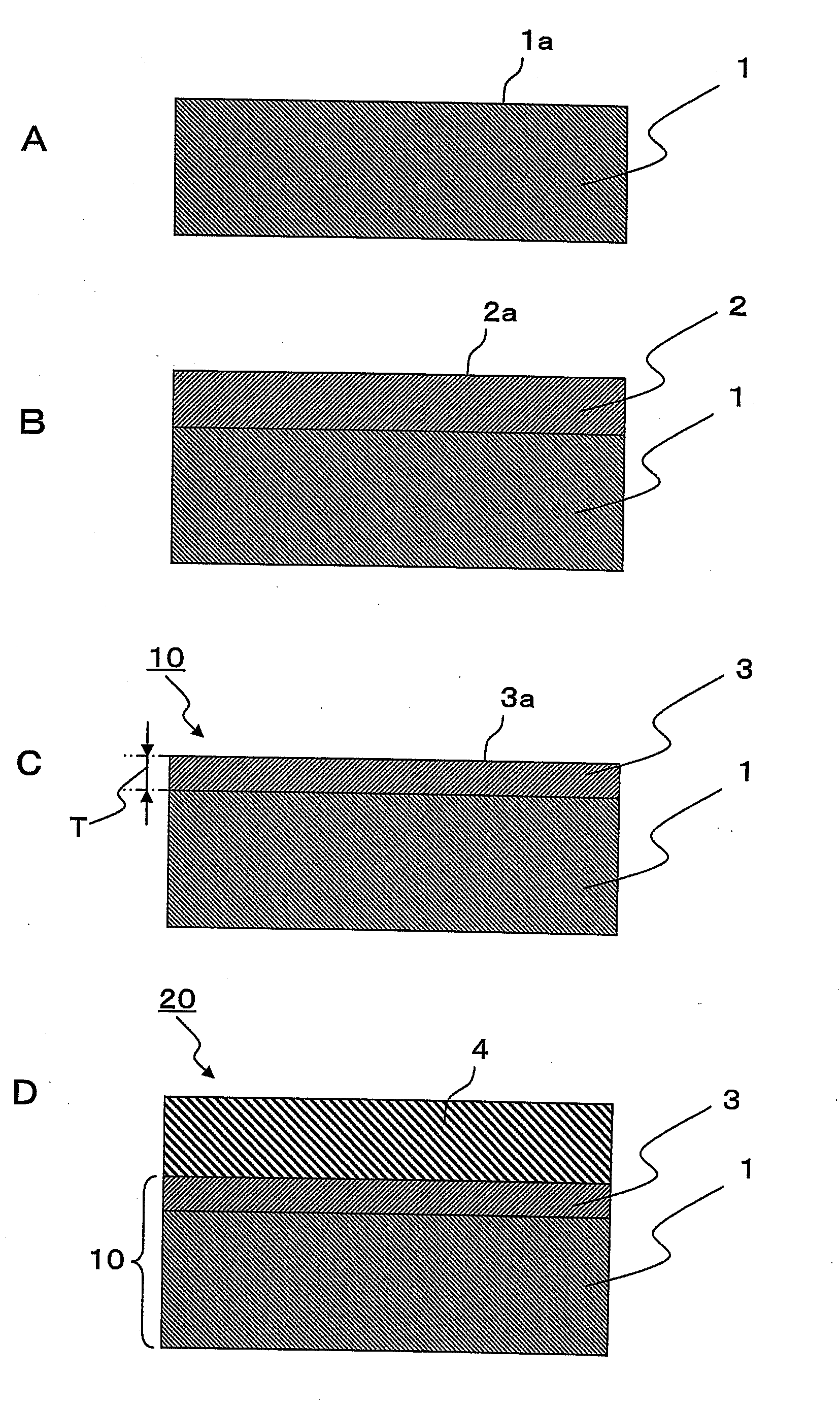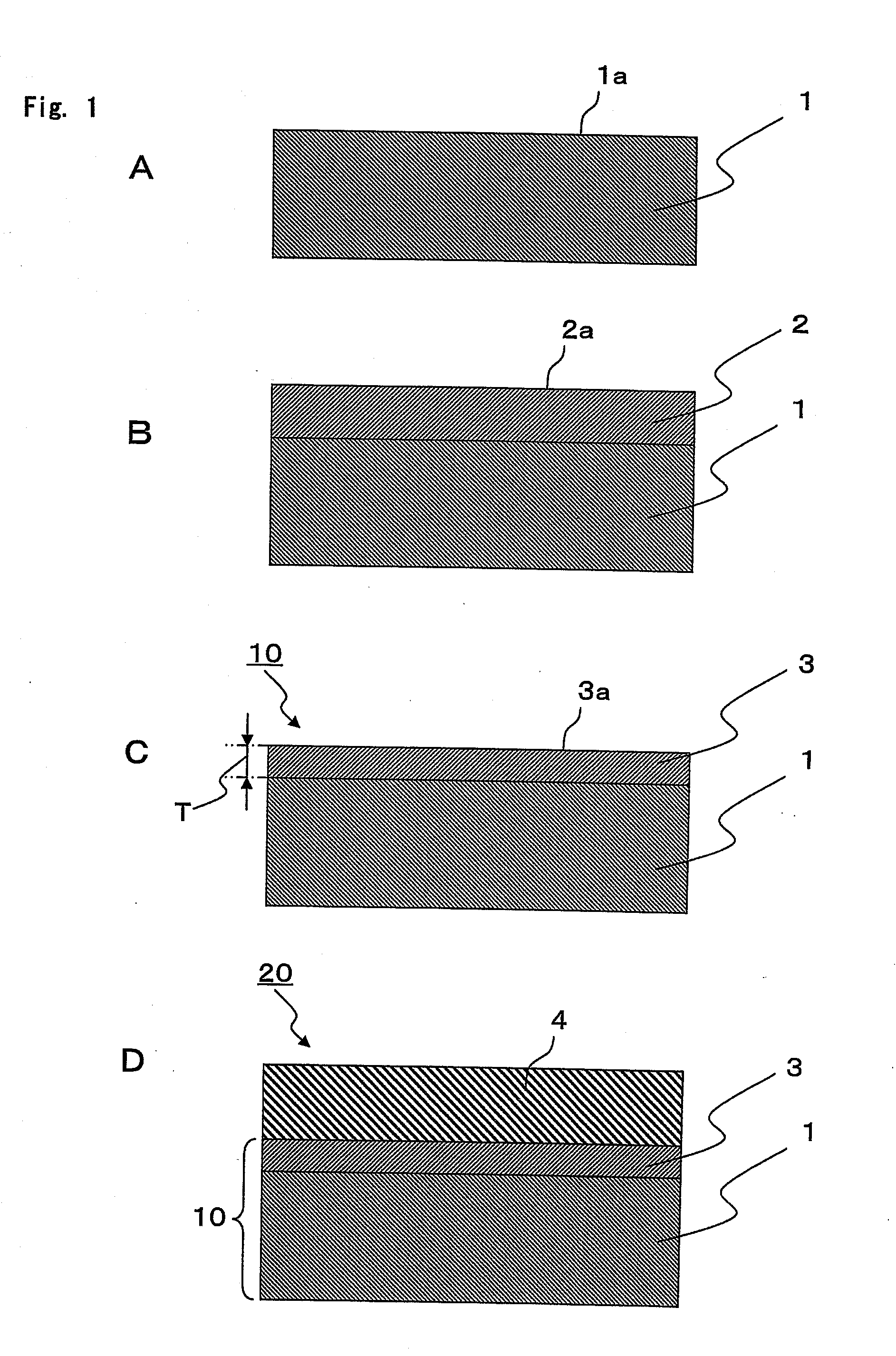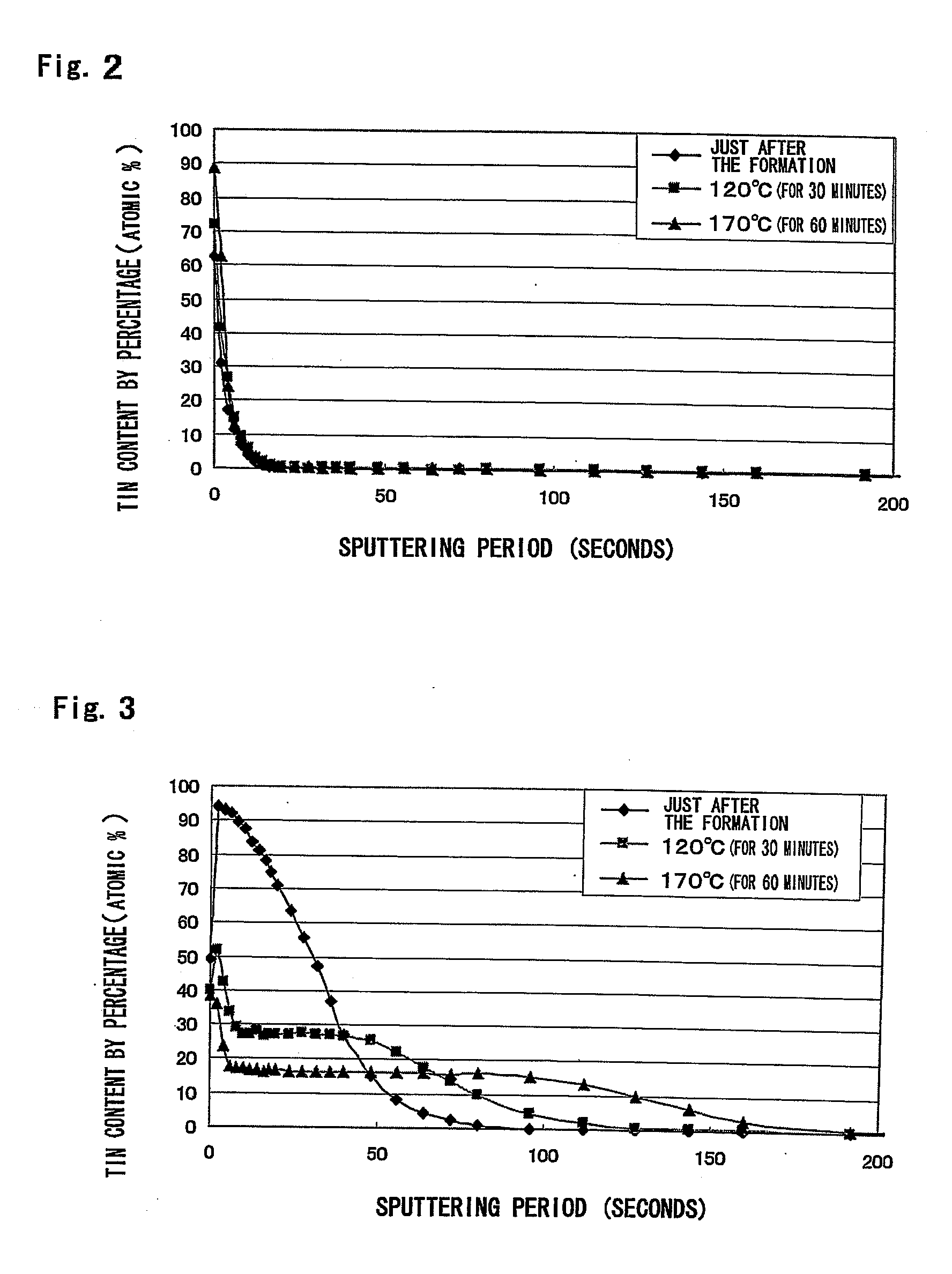Electroconductive layer, laminate using the same, and producing processes thereof
- Summary
- Abstract
- Description
- Claims
- Application Information
AI Technical Summary
Benefits of technology
Problems solved by technology
Method used
Image
Examples
example 1
[0049]A substrate wherein a copper electroplating layer 17 μm in thickness was formed on a copper-clad laminated plate (glass epoxy multi R-1766, manufactured by Matsushita Electric Industrial Co., Ltd.; copper foil piece thickness: 35 μm) was cut into a size of 100 mm×100 mm. This was immersed in a 10% by mass sulfuric acid solution for 30 seconds to clean the surface of the copper plating layer. The substrate was rinsed with water and then dried. The resultant was used as a test substrate. This test substrate was subjected to swinging immersion treatment in a displacement tin plating solution (T-9900) manufactured by Mec Co., Ltd. at 30° C. for 30 seconds. Thereafter, the substrate was rinsed with water, and then a tin plating treated layer was formed on the surface of the copper electroplating layer. Immediately after the formation, the tin plating treated layer was subjected to swinging immersion treatment in a 0.67% by mass solution of nitric acid in water at 30° C. for 20 seco...
example 2
[0054]A tin plating treated layer was formed on the same test substrate as in Example 1 in the same manner as in Example 1, and the substrate was immediately immersed into hot water at 30° C., and allowed to stand still therein for one minute. Thereafter, the tin plating treated layer was immediately subjected to swinging immersion treatment in a 0.67% by mass solution of nitric acid in water at 30° C. for 20 seconds to remove a surface region of the tin plating treated layer. The resultant was then rinsed with water, and dried to form a copper-tin alloy layer. Then, in the same manner as in Example 1, the resultant was evaluated about the individual items.
examples 3 to 11
[0055]The temperature of the hot water and the period for the immersion in Example 2 were changed to each temperature and each period in Table 1. In the same manner as in Example 2 except the change, samples of Examples 3 to 11 were yielded. The samples were evaluated in the same manner as in Example 1 about the individual items.
PUM
| Property | Measurement | Unit |
|---|---|---|
| Temperature | aaaaa | aaaaa |
| Time | aaaaa | aaaaa |
| Percent by mass | aaaaa | aaaaa |
Abstract
Description
Claims
Application Information
 Login to View More
Login to View More - R&D
- Intellectual Property
- Life Sciences
- Materials
- Tech Scout
- Unparalleled Data Quality
- Higher Quality Content
- 60% Fewer Hallucinations
Browse by: Latest US Patents, China's latest patents, Technical Efficacy Thesaurus, Application Domain, Technology Topic, Popular Technical Reports.
© 2025 PatSnap. All rights reserved.Legal|Privacy policy|Modern Slavery Act Transparency Statement|Sitemap|About US| Contact US: help@patsnap.com



